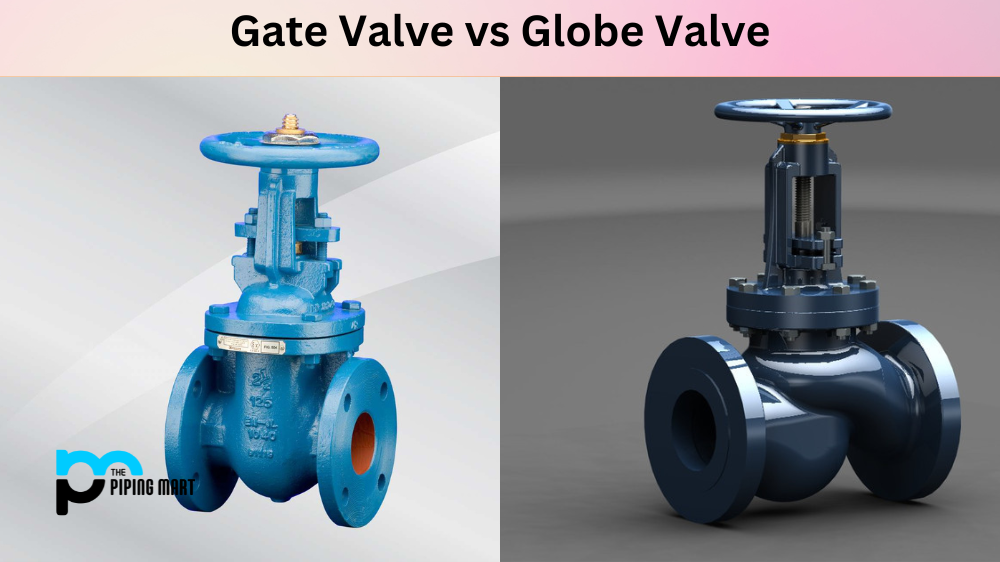If you’re in the market to purchase or replace valves, you must have come across the terms “gate valve” and “globe valve.” Both valve types have their unique features and benefits, but the right choice for you depends on the application. Understanding the differences between the two can help you make an informed decision. This blog post explores the different aspects of gate and globe valves, including their operation, design, advantages, and drawbacks.
Difference Between Gate Valve and Globe Valve
Operation
The gate valve operates by lifting and lowering a metallic gate inside the valve to regulate fluid flow. The wedge-shaped gate slides between two parallel seats, which creates a tight seal when closed, minimizing fluid leakage. Gate valves are designed for fully open or fully close operation, making them ideal for applications that demand a complete shut-off between pipes. On the other hand, the globe valve operates by raising or lowering the disk to control the fluid flow. The disk moves perpendicular to the flow and creates a small pressure drop, reducing the likelihood of cavitation and erosion.
Design
Gate valves are typically designed with a straight flow path, which minimizes turbulence and pressure drop, reducing the potential for erosion and corrosion. They also feature a simple design with few rotating or moving parts, requiring minimal maintenance and lasting longer. Globe valves are designed with a bent flow path, which increases turbulence and fluid resistance, causing more pressure drops. However, they have a finer flow control due to the disk’s ability to be positioned anywhere between the open and the closed position, allowing for partial flow regulation.
Advantages
Gate valves offer superior sealing capabilities and low leakage rates because the gate and the seat are tightly pressed against each other. They are ideal for handling large volumes of fluids and can maintain pressure after closing, reducing the risks of leaks and spills. Additionally, gate valves last a long time and require minimal maintenance thanks to their simple design. Globe valves, on the other hand, offer superior control and regulation over fluid flow, allowing for good regulation. They also have a longer lifespan than different types of valves and perform well in throttling applications, where the flow must be slowed down or stopped gradually.
Drawbacks
One of the drawbacks of gate valves is that they tend to be slower in operation than globe valves, which can be a disadvantage in applications that require immediate shut-off. Furthermore, gate valves require high torque and can be difficult to operate manually, especially in larger sizes. The primary disadvantage of globe valves is their susceptibility to leaks and hysteresis due to their design, which can lead to erosive wear. Additionally, globe valves require more maintenance than gate valves, especially in applications that handle abrasive or corrosive fluids.
Conclusion
The choice between gate and globe valves ultimately depends on your specific application. Consider the desired flow rate, the system pressure, valve size, and application requirements when deciding which type of valve to use. Gate valves are ideal for applications that require full open/close functionality, low maintenance, and high sealing capabilities. On the other hand, globe valves are perfect for good flow control applications that require regulated flow. Both gate and globe valves have unique advantages and drawbacks, and understanding them can help you make an informed decision that best suits your needs.

Abhishek is a seasoned blogger and industry expert, sharing his insights and knowledge on various topics. With his research, Abhishek offers valuable insights and tips for professionals and enthusiasts. Follow him for expert advice on the latest trends and developments in the metal industry.




